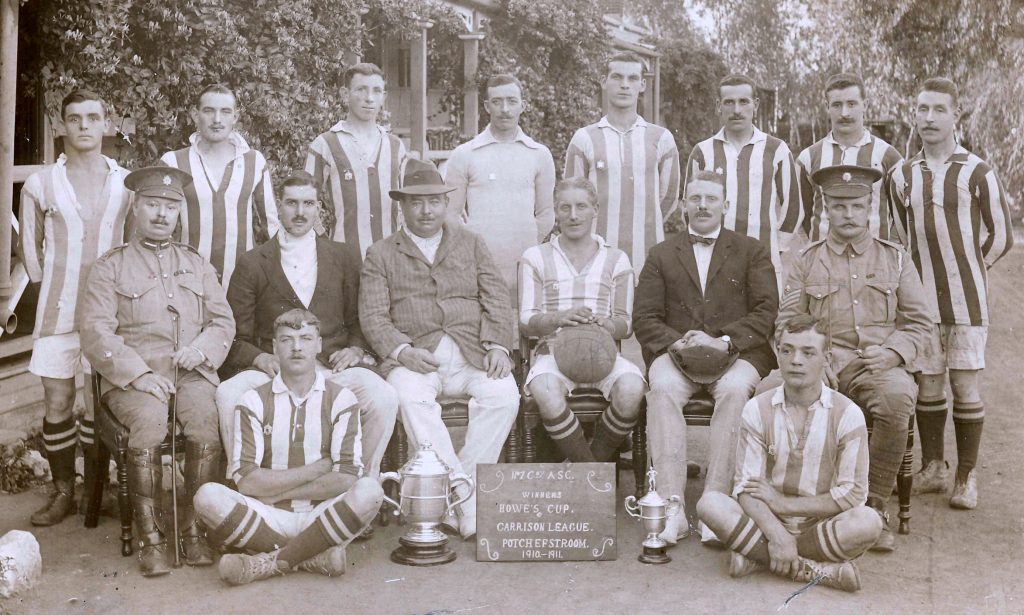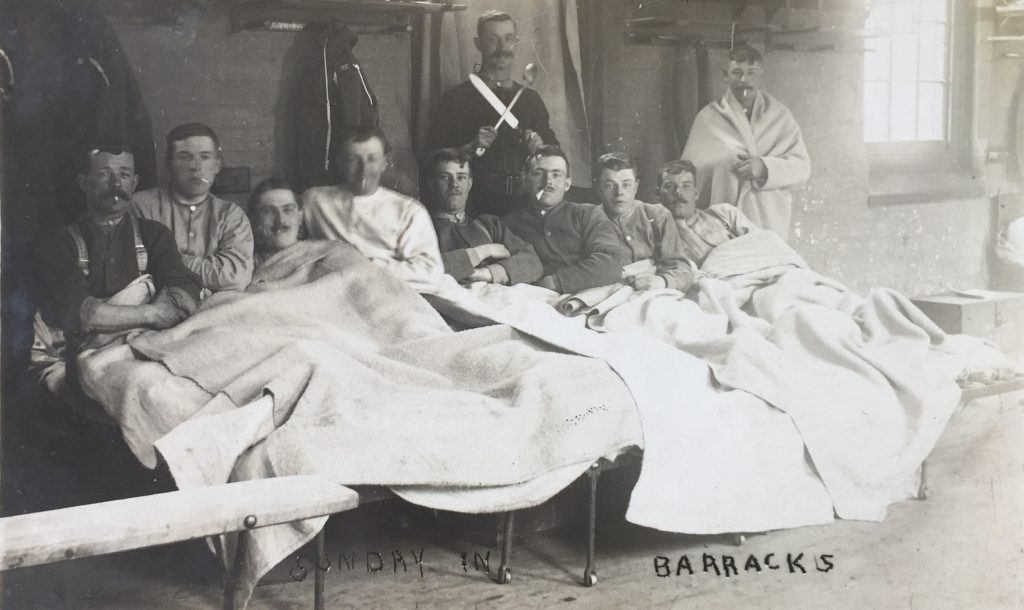
The 1911 Census of Great Britain and Ireland was taken on Sunday 2nd April 1911. It sought to enumerate not only people living in the British Isles (including the Channel Islands) but also those who were resident further afield. This included, for the first time ever, men at sea aboard Royal Navy ships and also, crucially, men and women serving in overseas military establishments.
In many respects, the British Army of 1911, as enumerated on the 1911 Census of England & Wales and in Scotland and Ireland, can be seen as a nominal roll of those career soldiers of the British Expeditionary Force who embarked for France in 1914 and early 1915.
Standard terms of enlistment in 1911, and in the years immediately preceding 1911, allowed for a period of service with the colours and a period of service on the army reserve. Service with the colours saw the man serving with his regiment and wearing uniform. Service on the army reserve saw the man returned to civilian life albeit it with the obligation to attend annual drills and to be prepared for recall to the colours in the event of a national emergency.
The vast majority of the soldiers who were enumerated on the 1911 Census would have signed up for a combination of seven years with the colours followed by five years on the reserve; 12 years’ service in total. Men serving overseas would generally have already served for at least 18 months to two years in the UK and even if a man transferred to the army reserve the day after the 1911 census was taken he would, in all probability, have been recalled to the colours as a reservist in August 1914. This is what makes the 1911 Census such a rich research resource for anyone with an interest in the British Expeditionary Force of 1914 and early 1915.

The 1911 Census records you will find on British Army Ancestors currently cover the majority of those men who were stationed in Ireland and overseas. The details that you will find are a man’s regimental details (mostly excluding regimental numbers which were not, as a rule, captured), plus their places of birth and their approximate year of birth. In all cases, the year of birth has been calculated based on the age of the soldier as stated in the 1911 Census.

There are over 130,000 names recorded in this first release of the British Army of 1911 and the data published here is taken from a fuller transcription which includes precise location in 1911, marital status and, in many cases, pre-army trade or occupation. Company-level detail has been captured or worked out for many of the men serving in infantry battalions.
This transcription of the British Army of 1911 is arguably the most complete and the most accurate transcription published to date and will be followed in due course by transcriptions of soldiers who were serving in England, Wales and Scotland in April 1911.
Paul Nixon, April 2020
For the first time ever, the 1911 census of England and Wales included men and their families who were stationed with their regiments overseas.
The British Army of 1911 collection, published by British Army Ancestors gives details of the men's names, rank, regiment, place of birth, approximate year of birth (based on their stated age in the 1911 census) and their country location. In some cases, regimental numbers are also given.
To view census images, have a look at the 1911 Census on Findmypast. The link will take you straight to the Overseas Military results.
The Army Annual and Year Book for 1912 reported that for the year ended 30th September 1911, 29,452 men enlisted in the British Army, an increase of 3018 compared with the previous twelve months. In addition, 140 men had re-enlisted, and there were 584 recruits for the Colonial Corps.
The British Army frequently adjusted its minimum height standards in order to meet the needs of its various corps. For example, from November 1910 until March 1911, men wishing to join the Royal Garrison Artillery had to stand at least five feet, seven inches tall. However, as more and more recruits were required, the standard was first dropped to five feet, six inches for men under 20 years of age and later, in May 1911, to five feet six inches for all. By September 1911, recruiting requirements had been sufficiently met to permit the standard to be raised again to five feet, seven inches for all recruits.
According to the Army Annual and year book for 1912, the establishment of all ranks in the British Army for 1911-1912, excluding the army in India, was 186,400 of all ranks. In India the figure was 75,884. The strength for 1912-1913 was projected to increase to 186,600 and 75,886 respectively (that is to say, a grand increase in the India headcount of just two soldiers!)
According to the Army Annual for 1912, a sergeant major earned 5 shillings and 5d per day; a colour sergeant earned 4 shillings and 5d per day; a sergeant earned 3 shillings and 3d; a corporal earned 2 shillings and 7d; a drummer earned 2 shillings and a private soldier earned 1 shilling and 11d.